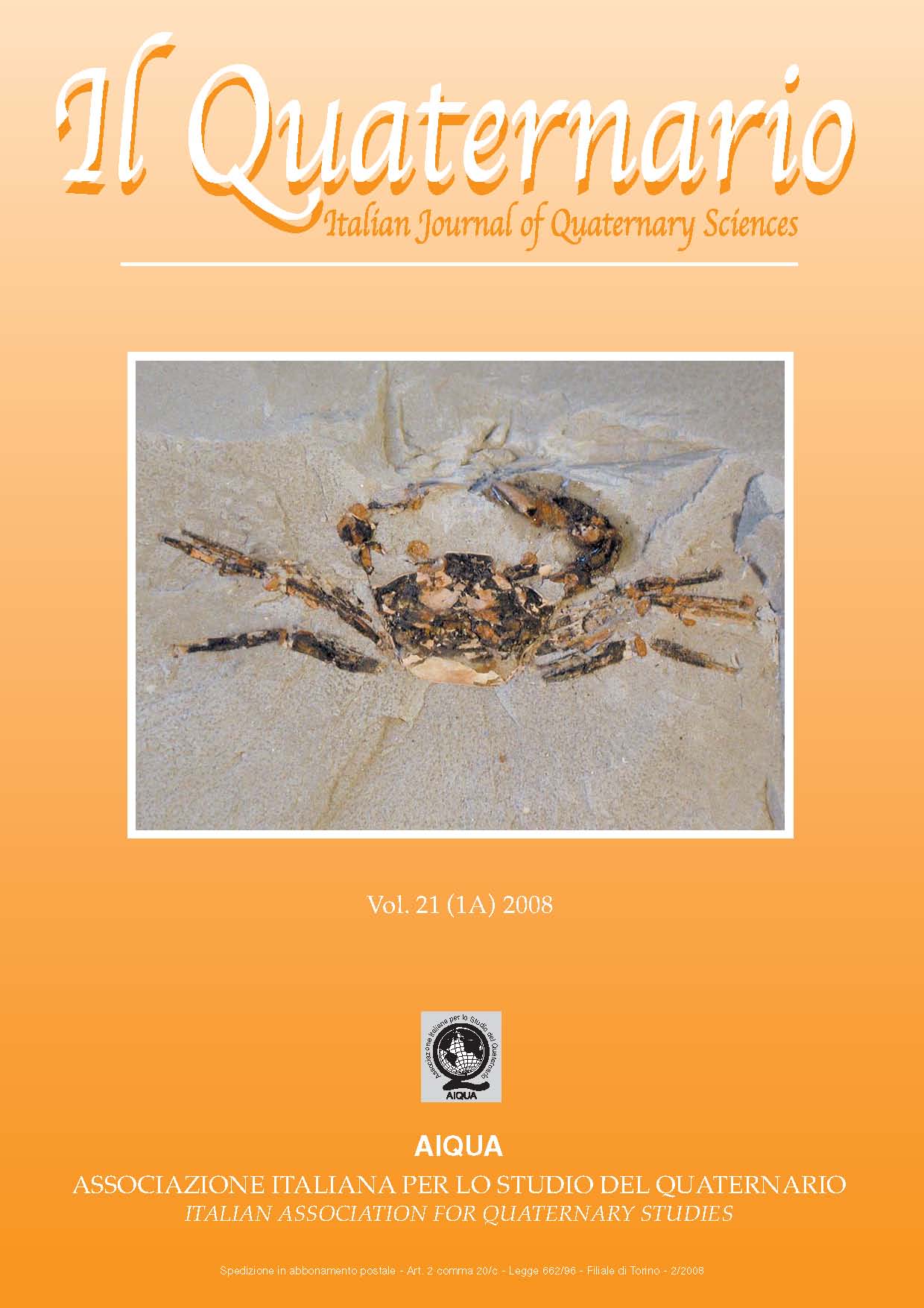CONTRIBUTI DEL PALEOMAGNETISMO ALLA STRATIGRAFIA DEL PLEISTOCENE MEDIO-SUPERIORE (BRUNHES CHRON)
Main Article Content
Abstract
L. Sagnotti, The contribute of paleomagnetism to the stratigraphy of the middle- late Pleistocene (Brunhes Chron).
This manuscript presents an updated summary on the contribute brought by paleomagnetism to the definition of a high-resolution
magnetic stratigraphy for the middle-late Pleistocene. The middle-late Pleistocene spans a time intervals during which the Earth
magnetic field held predominantly a stable normal polarity and includes the whole normal polarity Brunhes Chron. In absence of full
reversals of the geomagnetic field, magnetic stratigraphy is based upon (a) the record of geomagnetic paleosecular variations (PSV), as documented in archaeological or volcanic material and in lacustrine and marine sedimentary sequences for the last few ka,(b) the variation of geomagnetic paleointensity and (c) the occurrence of geomagnetic excursions .
With regards to Europe, archeomagnetic PSV curves were reconstructed back to 8 ka (i.e., ca. 6000 BC), whereas continuous PSV
records based on paleomagnetism of sediments extend back to the last 10-12 ka.
The variation in intensity of the earth magnetic field has been reconstructed in the detail at a global scale for the last 800 ka. Relative
paleointensity curves reconstructed in sedimentary sequences provide original correlation and dating tools and are particularly valuable to establish high-resolution age models in sequences that may lack other valuable stratigraphic proxies, such as those deposited in the carbonate-corrosive waters of peri-Antarctic margins.
Finally, the recognition and the dating of geomagnetic excursions, defined as sharp, short-lived and wide geomagnetic variations,
during which the earth magnetic field has departed from its usual near-axial configuration but did not give rise to complete reversals, is providing the basis for the establishment of a Geomagnetic Instability Time Scale (GITS) that extends back to the last 2.2 Ma.
Article Details
Section

This work is licensed under a Creative Commons Attribution-NonCommercial-NoDerivatives 4.0 International License.
The Author grants usage rights to others using an open license (Creative Commons or equivalent) allowing for immediate free access to the work and permitting any user to read, download, copy, distribute, print, search, or link to the full texts of articles, crawl them for indexing, pass them as data to software, or use them for any other lawful purpose.

